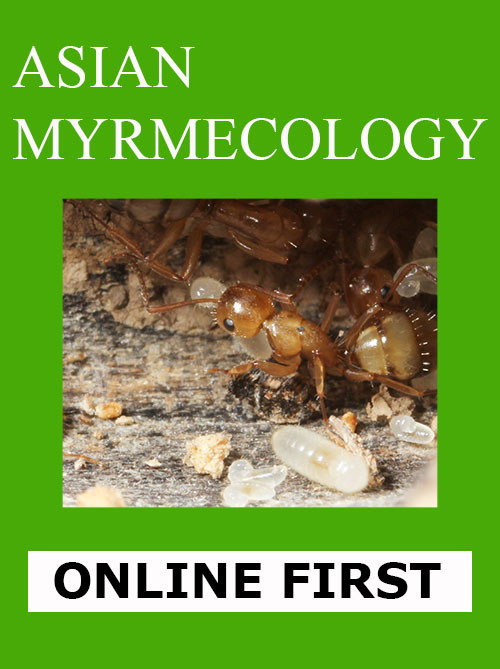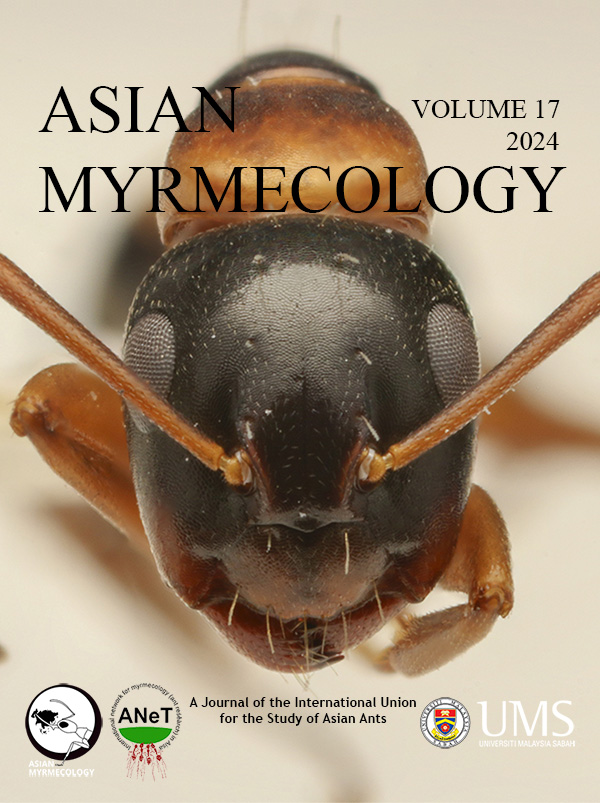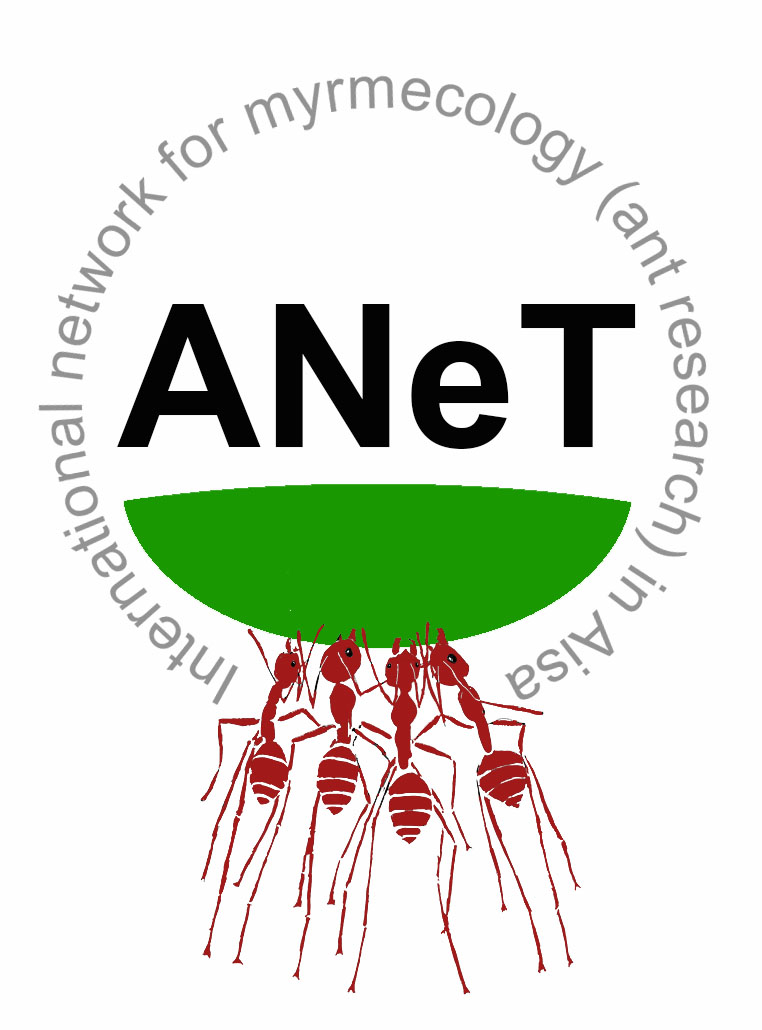ASIAN
MYRMECOLOGY
Image: François Brassard
online first (online version of paper published before print issue)
DOI: 10.20362/am.018001
Asian Myrmecology 18: 018001 (1-9)
article first published online: 1/April/2025
Colony composition, prey preference and behavioral characteristics of Leptanilla kubotai (Hymenoptera: Formicidae: Leptanillinae)
HAJIME SASAKI*, ADAM KHALIFE & FUMINORI ITO
Abstract:
Leptanilline ants are cryptic, and our comprehension of their natural history remains incomplete. We collected one colony of Leptanilla kubotai in October 2023 and investigated the colony composition and behavioral characteristics of this rare species. The nest of Leptanilla kubotai was situated 15 cm deep in the soil and contained one dichthadiiform queen, 453 workers, and 663 larvae.The queen had 88 ovarioles, while the workers had no ovaries. Workers were specialized predators of geophilomorph centipedes, and promptly recruited nestmates upon encounter with a prey. Larvae showed remarkable mobility, associated with unique morphological features: a ventral hooked claw on their prothorax and a row of teeth on the external margin of their mandibles. The queen and workers performed larval hemolymph feeding and likely rely on larvae for nutrition in the absence of prey. We compare these findings to other Leptanillinae and discuss the specialization of Leptanilla for asubterranean lifestyle.
Keywords:
Leptanilla, larval hemolymph feeding, natural history, larval mobility
Get PDF (2.1 MB) :
HAJIME SASAKI*, ADAM KHALIFE & FUMINORI ITO
Abstract:
Leptanilline ants are cryptic, and our comprehension of their natural history remains incomplete. We collected one colony of Leptanilla kubotai in October 2023 and investigated the colony composition and behavioral characteristics of this rare species. The nest of Leptanilla kubotai was situated 15 cm deep in the soil and contained one dichthadiiform queen, 453 workers, and 663 larvae.The queen had 88 ovarioles, while the workers had no ovaries. Workers were specialized predators of geophilomorph centipedes, and promptly recruited nestmates upon encounter with a prey. Larvae showed remarkable mobility, associated with unique morphological features: a ventral hooked claw on their prothorax and a row of teeth on the external margin of their mandibles. The queen and workers performed larval hemolymph feeding and likely rely on larvae for nutrition in the absence of prey. We compare these findings to other Leptanillinae and discuss the specialization of Leptanilla for asubterranean lifestyle.
Keywords:
Leptanilla, larval hemolymph feeding, natural history, larval mobility
Get PDF (2.1 MB) :
Get Electronic Supplementary Video S1 (480MB):
Get Electronic Supplementary Video S2 (65MB):
Get Electronic Supplementary Video S3 (23MB):
Get Electronic Supplementary Video S4 (470MB):
Faculty of Agriculture, Kagawa University, Ikenobe, Miki, Kagawa 761-0795, Japan
*Corresponding author: s22a060@kagawa-u.ac.jp



